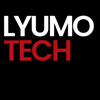Introduction:
Websites are generally the first point of contact between users and brands. Creating a seamless, visually appealing, and user-friendly website has become a necessity for businesses aiming to make a lasting impression. In this blog, we will explore the latest trends and provide a comprehensive framework to guide you in creating an effective website design and development strategy.
Website design and development Company
Defining Clear Objectives:
Before diving into design and development, it is crucial to define the purpose and objectives of your website. Understand your target audience, identify key goals such as lead generation, e-commerce, or brand awareness, and align your design and development decisions with these objectives.
User-Centric Design:
Prioritizing user experience (UX) in your design is critical. User-centric design involves creating an intuitive and enjoyable journey for visitors. Consider the user flow, information architecture, and navigation, ensuring that users can easily find what they're looking for. Responsive design is essential in today's mobile-centric landscape.
Mobile-First Approach:
The majority of internet users access websites via mobile devices, so adopting a mobile-first approach is crucial. Design and develop your website with mobile users in mind, ensuring a seamless and optimized experience across various screen sizes.
Embracing Minimalism:
Minimalist design is a dominant trend, focusing on simplicity, clarity, and functionality. Streamline your design elements, use ample white space, and opt for a clean and uncluttered layout. Minimalism enhances visual appeal and improves user comprehension and navigation.
Typography Matters:
The choice of fonts can significantly impact the overall aesthetic and readability of your website. Experiment with bold typography, mix fonts judiciously and ensure that text is easily readable across different devices. Large, legible fonts contribute to a modern and sophisticated look.
Immersive Visuals and Multimedia:
Engage your audience with high-quality visuals and multimedia elements. Incorporate striking images, videos, and interactive elements that not only capture attention but also communicate your brand message effectively. Consider the use of micro-animations and parallax scrolling for a more immersive experience.
Personalized User Journeys:
Implementing personalization features enhances user engagement. Tailor content based on user preferences, location, or previous interactions. Personalized recommendations and dynamic content contribute to a more customized and relevant user experience.
SEO-Friendly Structure:
A well-structured website is not only user-friendly but also search engine-friendly. Optimize your website's structure, URLs, and content for search engines. Conduct keyword research and ensure that your website follows SEO best practices to improve visibility on search engine results pages (SERPs).
Fast Loading Speed:
Compress images, leverage browser caching, and minimize HTTP requests to optimize your website's loading speed. Tools like Google PageSpeed Insights can help you identify and address performance issues.
Security Measures:
Prioritizing the security of your website and your users' data is important. Implement SSL encryption, regularly update software and plugins, and conduct security audits. A secure website not only protects user information but also contributes to a trustworthy online presence.
Scalability and Future-Proofing:
Design and develop your website with scalability in mind. Choose a flexible and extensible framework that can accommodate future updates, new features, and changes in technology. Being future-proof ensures that your website remains relevant and adaptable in the long run.
User Feedback and Iteration:
After launching your website, actively seek user feedback. Use analytics tools, conduct user testing, and gather insights to identify areas for improvement. A continuous cycle of feedback and iteration ensures that your website evolves with changing user needs and technological advancements.
Conclusion:
Creating an effective website design and development framework involves a harmonious blend of user-centric design, technical optimization, and adaptability to emerging trends. By focusing on clear objectives, prioritizing user experience, embracing the latest design trends, and staying vigilant about security and performance, you can craft a digital presence that not only meets but exceeds user expectations. Keep iterating, stay informed about industry advancements, and let your website be a dynamic reflection of your brand's commitment to excellence in the digital realm.







Top comments (0)